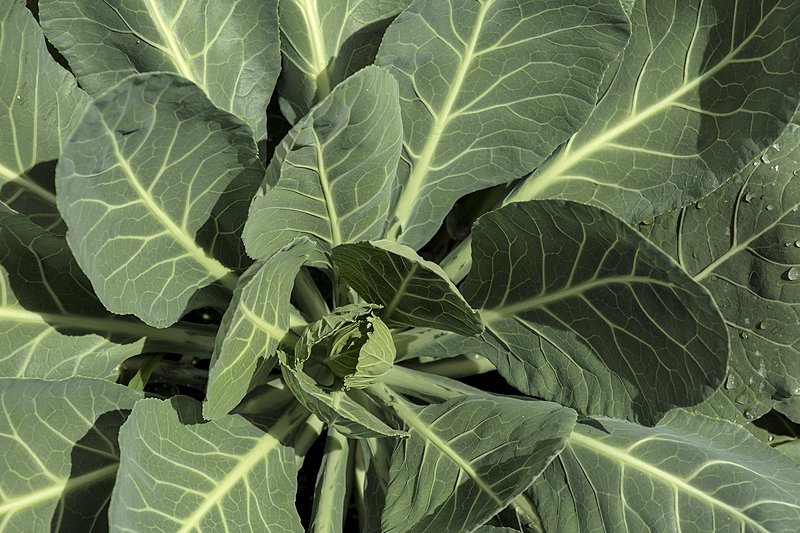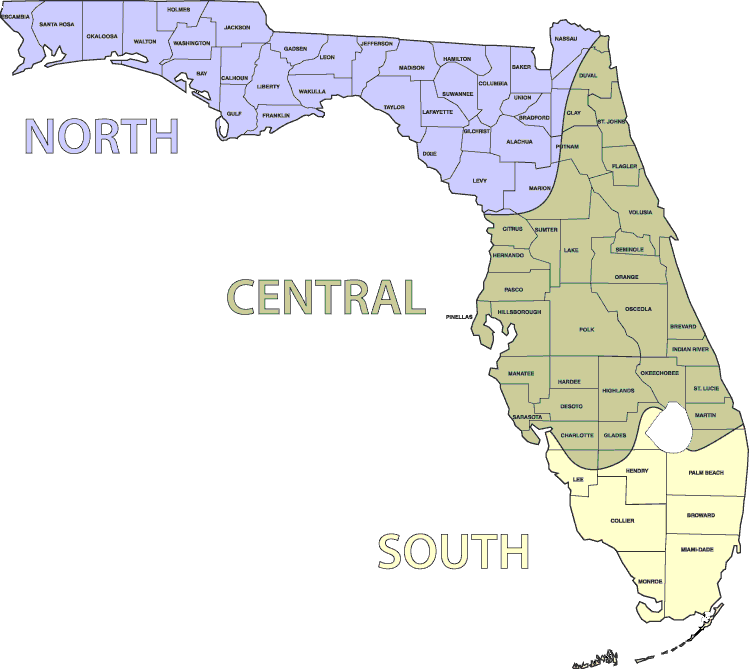Collard Greens Varieties for Florida
Collard greens, with their large, dark green leaves and sturdy stems, bring a robust and nutritious presence to any garden. These leafy greens are known for their rich, slightly bitter flavor and high nutritional value. Their broad, overlapping leaves create a lush, verdant display, making collard greens a standout feature in garden beds or containers.
In Florida planting zone 9, collard greens thrive, particularly in the cooler months. The plants grow into tall, bushy forms, with leaves that can be harvested continuously throughout the growing season. Watching these vibrant greens flourish is a satisfying experience, showcasing the bounty of your garden.
For those new to gardening, collard greens are an excellent choice. They are relatively easy to grow and provide a steady supply of nutritious leaves. Whether you enjoy them sautéed, in soups, or as part of a traditional Southern dish, collard greens bring a hearty and healthy addition to your meals, making your gardening efforts truly rewarding.
I would give collard greens a 5 out of 5 on how easy they are to grow. They are very easy to cultivate and manage, making them perfect for beginners and experienced gardeners alike.
Georgia Southern
Heirloom

Description: Georgia Southern is a popular heirloom variety known for its large, dark green, crumpled leaves and mild flavor. It is highly productive and well-suited for both home gardens and market growing.
Growing Season: Fall and Winter
USDA Planting Zone: 6-10
Special Notes: Very heat-tolerant and resistant to bolting, making it an excellent choice for warmer climates like Florida.
Vates
Heirloom

Description: Vates is a compact variety that produces smooth, dark green leaves with a tender texture and mild flavor. It is ideal for smaller gardens due to its compact growth habit.
Growing Season: Fall and Winter
USDA Planting Zone: 6-9
Special Notes: Highly resistant to cold weather and slow to bolt, making it suitable for extended harvesting.
Morris Heading
Heirloom

Description: Morris Heading is an heirloom variety that produces large, thick, crumpled leaves with a sweet, mild flavor. It forms loose heads that are easy to harvest.
Growing Season: Fall and Winter
USDA Planting Zone: 6-10
Special Notes: Known for its excellent heat tolerance and resistance to bolting. It's a traditional favorite in Southern cuisine.
Top Bunch
Hybrid

Description: Top Bunch is a hybrid variety that produces dark green, tender leaves with a smooth texture. It is known for its rapid regrowth after cutting, providing multiple harvests.
Growing Season: Fall and Winter
USDA Planting Zone: 7-10
Special Notes: Fast-growing and highly productive, making it a great choice for continuous harvesting.
Champion
Heirloom

Description: Champion is a hybrid variety similar to Vates but with slightly larger and thicker leaves. It is known for its excellent flavor and tender texture.
Growing Season: Fall and Winter
USDA Planting Zone: 7-9
Special Notes: Very hardy and resistant to bolting, providing a long harvest period.
Florida Vegetable Planting Guide
This guide provides information on when to start seeds inside, direct seed, and transplant starter plants in the different regions of Florida.
North USDA Planting Zones: 8b-9a
Central USDA Planting Zones: 9b & some of 10a
South USDA Planting Zones: 10a-11b
Visit the U.S. National Arboretum for an Exact USDA Planting Zone Map.

| Collard Greens | North Florida | Central Florida | South Florida |
|---|---|---|---|
| Start Seeds Inside | Aug-Feb | Aug-Feb | Aug-Jan |
| Direct Seed | Aug-Feb | Sep-Feb | Sep-Jan |
| Transplant Starter Plants | Aug-Feb | Sep-Feb | Sep-Jan |
Explanation:
Start Seeds Inside: Starting collard greens seeds indoors provides a controlled environment for germination, ensuring strong seedlings ready for transplanting outdoors.
Direct Seed: Direct seeding collard greens during the cooler months allows the plants to establish quickly and avoid the stress of high temperatures.
Transplant Starter Plants: Transplanting collard greens starter plants during the cooler months helps them establish quickly and take advantage of the full growing season, leading to a bountiful harvest.
________________________________________________________________________________________________________________________
Soil: Collard greens prefer well-drained, fertile soil with a pH between 6.0 and 7.5. Amend the soil with compost or well-rotted manure to improve fertility.
Sun: Full sun is ideal, but collard greens can tolerate partial shade, especially in hotter climates.
Watering: Keep the soil consistently moist but not waterlogged. Mulching helps retain soil moisture and regulate temperature.
Spacing: Plant seedlings 12-24 inches apart in rows & rows should be spaced 24 inches apart to allow adequate air circulation and room for growth.
Fertilization:
N-P-K Ratio: Collard greens benefit from a balanced fertilizer with a higher nitrogen content to support leafy growth, such as 10-10-10 or 15-5-10.When to Add:
Before Planting: Apply the balanced fertilizer to the soil before planting seeds or transplants to promote strong initial growth.
Mid-Growing Season: Reapply the fertilizer every 4-6 weeks during the growing season to support continued leafy growth.
Application Tips:
Follow the directions on the fertilizer package to avoid over-fertilization.
Apply the fertilizer evenly around the base of the plants and water thoroughly to help the nutrients reach the roots.
Additional Tips:
Collard greens grow best in well-drained soil rich in organic matter, so consider adding compost to improve soil fertility and structure.
Mulch around the plants to help retain moisture, suppress weeds, and regulate soil temperature.
Ensure that collard greens receive consistent moisture, especially during the growing season, to prevent stress and promote even growth.
Blog post on Natural Fertilizers
Harvest: Collard greens are ready to harvest when the leaves are about 10-12 inches long, typically 50-90 days after planting. You can pick individual leaves from the bottom up, allowing the inner leaves to continue growing.
By selecting the right collard greens varieties and following these growing tips, you can achieve a successful and bountiful collard greens harvest in your Florida garden.
Pests and Diseases that affect Collard Greens in Florida:
Aphids: Small insects that suck sap from the leaves and stems, causing curling and yellowing.
Cabbage Worms: Caterpillars that chew large holes in the leaves.
Flea Beetles: Small beetles that chew small holes in the leaves.
Cutworms: Caterpillars that cut down young plants at the base.
Natural Pest Control
Downy Mildew: A fungal disease that causes yellowing leaves with a fuzzy, grayish growth on the underside.
Clubroot: A fungal disease that causes swollen and distorted roots, leading to stunted growth.
Companion Plants
Marigold
Description: Marigolds are bright, sunny flowers that come in a variety of colors including yellow, orange, and red.
Growing Season: Spring through fall
USDA Planting Zone: 2-11
Special Notes: Marigolds release chemicals in the soil that deter nematodes and other soil-borne pests.
How it Helps: Marigolds help repel aphids, flea beetles, and other pests. Their roots secrete a substance that helps prevent nematodes, protecting collard greens’ root system.
Onions
Description: Onions are bulbous vegetables with a pungent taste and strong aroma.
Growing Season: Fall to spring
USDA Planting Zone: 3-9
Special Notes: Onions prefer full sun and well-drained soil.
How it Helps: Onions help repel aphids, flea beetles, and other pests that can damage collard greens. Their strong odor masks the scent of collard greens, making it harder for pests to locate them.
Dill
Description: Dill is an herb with feathery green leaves and yellow flowers, known for its use in pickling.
Growing Season: Spring to early summer
USDA Planting Zone: 2-11
Special Notes: Dill prefers full sun and well-drained soil.
How it Helps: Dill attracts beneficial insects such as ladybugs and predatory wasps that prey on aphids, cabbage worms, and flea beetles. It also helps improve the health of surrounding plants by enhancing their growth.
Chamomile
Description: Chamomile is a daisy-like herb known for its small, white flowers and calming properties.
Growing Season: Spring to summer
USDA Planting Zone: 3-9
Special Notes: Prefers full sun to partial shade and well-drained soil.
How it Helps: Chamomile attracts beneficial insects like hoverflies and parasitic wasps that prey on aphids and other pests. It also has antifungal properties that can help protect collard greens from diseases such as downy mildew.
Thyme
Description: Thyme is a low-growing perennial herb with small, aromatic leaves and purple or pink flowers.
Growing Season: Spring to fall
USDA Planting Zone: 5-9
Special Notes: Thyme prefers full sun and well-drained soil.
How it Helps: Thyme helps repel cabbage worms, flea beetles, and other pests with its strong aroma. It also attracts beneficial insects that prey on pests affecting collard greens.
These companion plants help protect collard greens from pests and diseases while also enhancing the overall health and productivity of the garden.
For collard greens, here are the vegetable plants that should not be planted nearby:
Strawberries - Can attract pests and diseases harmful to collard greens.
Tomatoes - Compete for nutrients and can attract pests that affect collard greens.
Peppers - Can stunt the growth of collard greens.
Pole Beans - Can inhibit the growth of collard greens.
Other Brassicas (Cabbage, Cauliflower, Brussels Sprouts, Broccoli) - Compete for the same nutrients and can attract similar pests and diseases.
